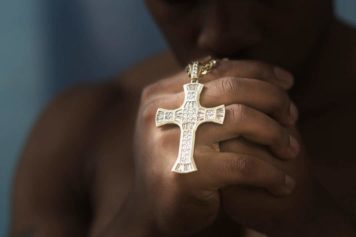
The survey found that families earning more than $75,000 were twice as likely as families making less than $30,000 to describe their homes as “excellent” or “very good.” However, more than half of low-income families worried about their children being attacked.
The Pew study also has implications for Black families. Juliana Horowitz, associate director of research for Pew Research Center, told NBC News single-parent families are more likely to live in poverty. This is not surprising since they often rely on the income of one working parent, and most single parents are not pulling in six-figure salaries.
“Children in single-parent or cohabiting households are more likely to be living in poverty than those living with married parents,” she said. “And in our survey we found that parents who are married are about twice as likely as cohabiting or single parents to say they live comfortably financially.”
Because of the high prevalence of single-parent families, Black children are more likely to live in poverty.
“Black children are particularly likely to be living in a single-parent household – 54 percent of black children are in this type of household,” she said. “In contrast, most white (72 percent), Asian American (82 percent) and Hispanic (55 percent) children are living with two married parents.”
According to a Washington Post story, poor Black families are more likely to live in areas of what they describe “concentrated poverty.” By that they mean, not only the family is poor, but so are the people who live next to them and the neighborhood in general. That means higher rates of violence, poorer schools and fewer social resources.
If you’re from a poor family and live in a low-income neighborhood, it has become increasingly difficult to get out of poverty. The government has largely scaled back anti-poverty programs since President Lyndon Johnson’s Great Society program. Even education, which used to be fast-track out of poverty, is becoming increasingly expensive and out of reach for low-income students.
Some education experts worry the rising price of education is creating a two-tier society, where if you can’t afford to go to a top-notch school, you won’t get the best jobs.
“Today in many ways the system is exacerbating inequality,” said Suzanne Mettler, a professor at Cornell University and author of Degrees of Inequality: Why Opportunity Has Diminished in U.S. Higher Education in a Huffington Post article. “It’s creating something of a caste system that for too many people takes them from wherever they were on the socioeconomic spectrum and leaves them even more unequal.”
The Pew study also had some interesting findings about what parents worry about. Black parents are twice as likely as white parents to worry about their children getting shot. White parents were more likely to worry about their children suffering from depression.
“More black parents (39 percent) say this is something they worry about, compared with 22 percent of white parents,” Horowitz said. “This difference persists even when looking only at white and black parents in urban areas, where there is more concern about shootings (40 percent of all parents in urban areas worry one of their children might get shot at some point vs. 29 percent of parents in the suburbs and 21 percent of parents in rural areas).”
According to Rakesh Kocchar, author of a report titled The American Middle Class is Losing Ground: No Longer the Majority and Falling Behind Financially, income inequality is worsening in America. However, he says there are fewer Black people within the lower income population than in 1971.
“Compared to the overall population, African Americans make up only 43 percent of lower income households,” Kocchar said. “And in upper income, African Americans make up 12 percent compared to 21 percent overall.”


